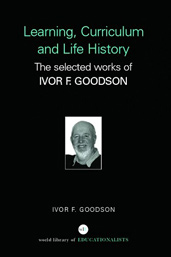Learning, Curriculum and Life Politics: the selected works of Ivor F. Goodson
Nations at Risk
The 1902 Education Act and the Secondary Regulations therefore arbitrated between these two traditions. Ryder and Silver have judged that the 1902 Act ensured that 'whatever developments in secondary education might occur, it should be within a single system in which the dominant values should resemble those of the traditional grammar school and its curriculum' (Ryder and Silver, 1970). Likewise, Eaglesham judged that:
These regulations were the work of a number of officials and inspectors of the Board. It may be argued that they gave a balanced curriculum. They certainly effectively checked any tendencies to technical or vocational bias in the secondary schools. They made them schools fit only for a selected few. Moreover they proclaimed for all to see the Board's interest in the literary and classical sides of secondary education. For the future the pattern of English culture must come not from Leeds and West Ham but from Eton and Winchester (Eaglesham, 1967, p. 59).
Whilst these two quotes present grammar and public curricula in too monolithic a manner the general point can be summarized in this way: 'Secondary education was in 1904 given so academic a curriculum that it suited only a few' (Eaglesham, 1967, pp. 59 – 60). In this manner the settlement of 1902 - 4 chose the historical legacy and curriculum aimed at certain groups over that aimed at other groups and legislated that this model should constitute the secondary school curriculum. The 1904 Secondary Regulations outline clear guidelines; we see then curriculum as social prioritizing.
The division of post primary schooling between public schools, grammar schools and other schools pre-eminently for the working class, the elementary schools, and subsequently secondary modern schools, survived into the period following the Second World War. Opposition to the selective examination for deciding who went to grammar school, the so-called 11-plus, grew, and some experiments in comprehensive or multilateral schooling began in the 1940s. In 1964 a Labour Government was returned, and began dismantling the existing divisive system and introducing comprehensive schools.
